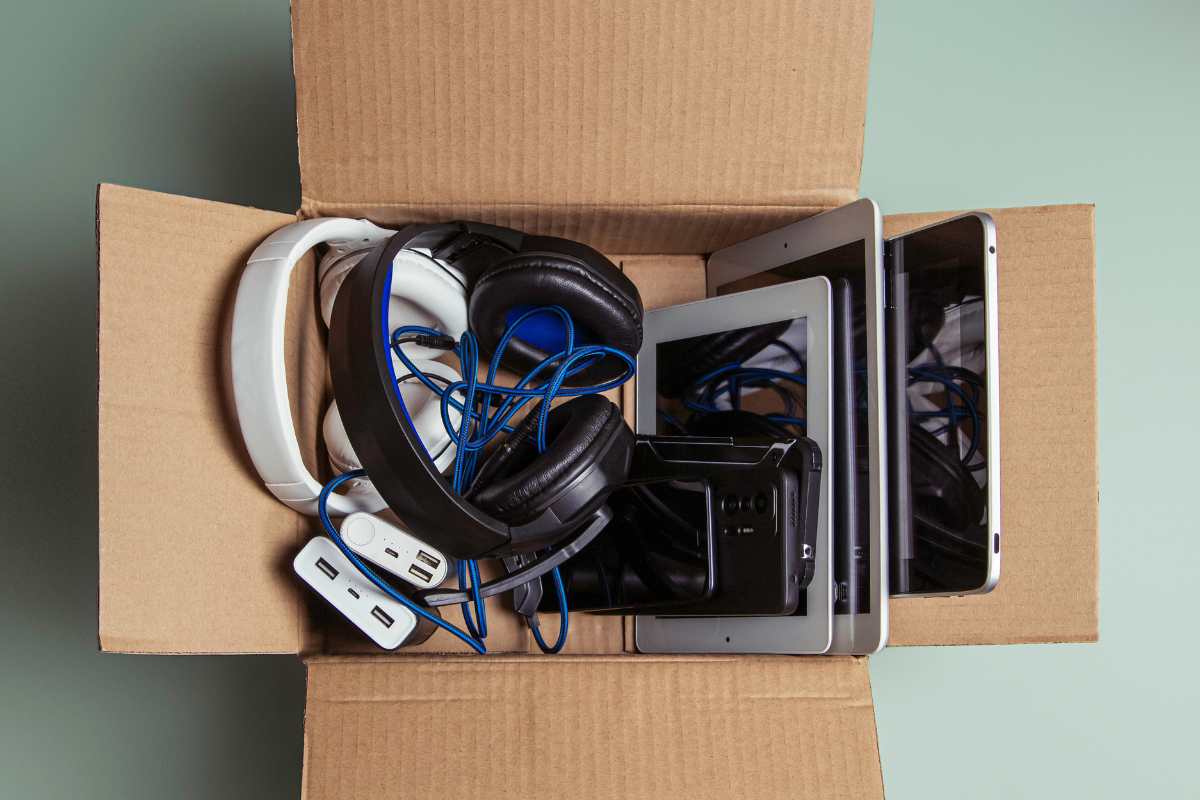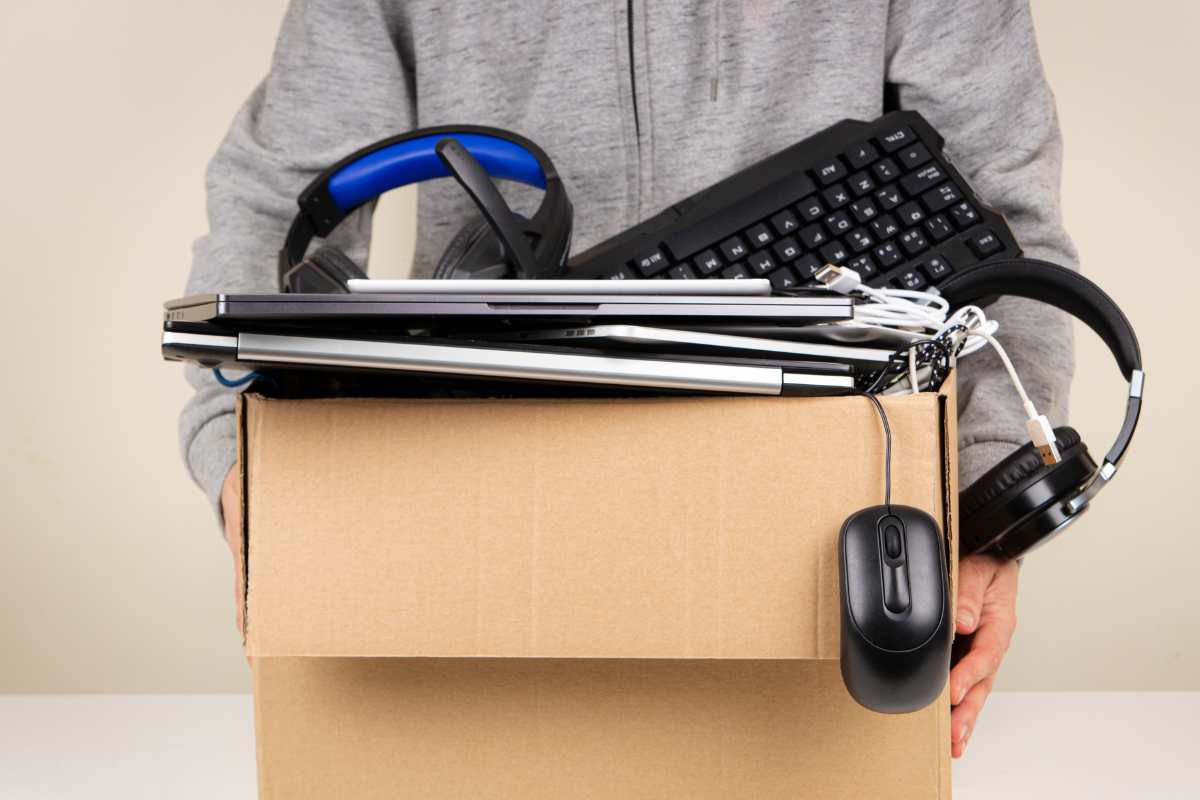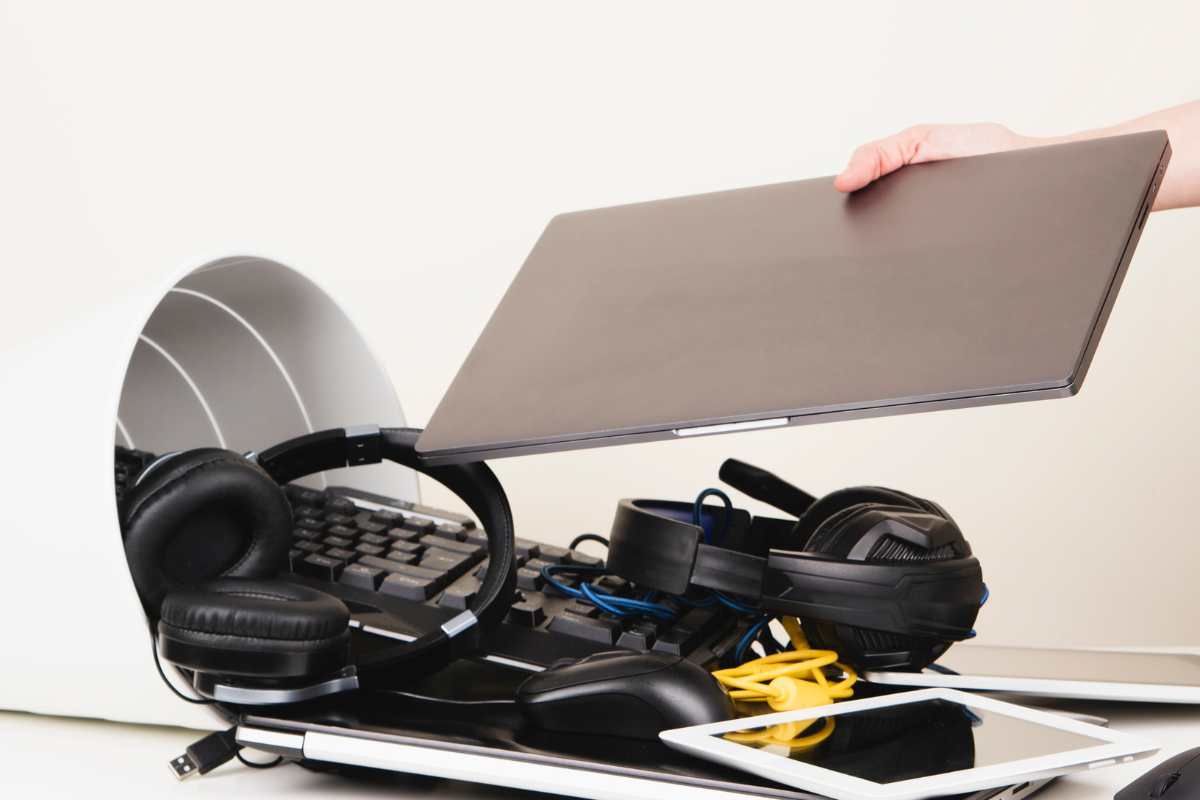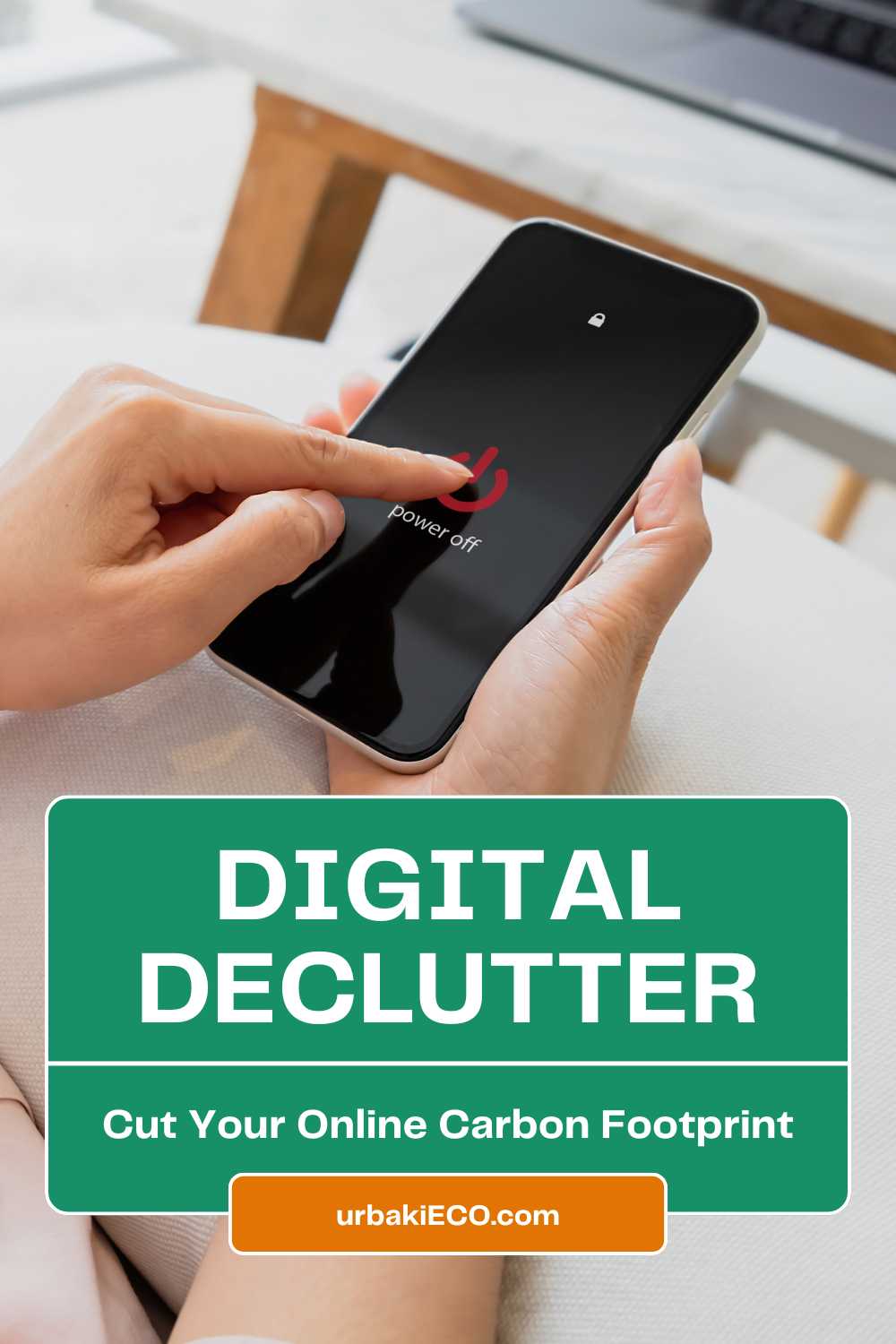Digital Declutter: Cut Your Online Carbon Footprint

Our screens feel weightless, but every click, stream, and sync taps into an energy-hungry infrastructure of servers, networks, and devices.
Data is stored, duplicated, and moved across continents; videos auto-play; photos back up in several places; apps ping you day and night.
Multiply that by millions and you get a quiet, constant demand for electricity. A digital declutter doesn’t just bring calm to your feeds and files—it also trims the energy load behind your habits, reducing the emissions linked to your online life.
Think of it as spring cleaning for the cloud: less noise, less waste, more intention.
How Digital Clutter Grows (And Why It Matters)

Clutter creeps in because everything is easy to save and hard to delete. We hoard photos, keep duplicates “just in case,” let newsletters pile up, and never revisit abandoned projects.
Behind the scenes, those bits consume storage on servers that draw power 24/7. Idle files still demand active resources—from resilience backups to always-on cooling.
On the user side, a phone crammed with apps drains battery faster and gets replaced sooner. Shorter device lifecycles mean more manufacturing emissions.
The solution isn’t techno-guilt—it’s tech with intention: keep what serves you, release what doesn’t, and choose lighter defaults.
The Three Big Levers of an Online Footprint
A meaningful reduction usually comes from a few focus areas.
Behavioral choices. What you watch, store, and send—plus how often—shapes the energy your habits pull.
 How to Track and Measure Your Eco-Friendly Progress
How to Track and Measure Your Eco-Friendly ProgressA shift in defaults (muted auto-play, fewer push notifications, mindful storage) cascades into quieter servers and networks.
Data intensity. Video is the heavyweight of the web. Lower-intensity formats—audio over video when visuals don’t matter, SD where HD isn’t needed, text when quick answers suffice—dramatically shrink the burden.
Device longevity. Extending the life of what you own—with cleaner storage, fewer background processes, and efficient charging—reduces replacement cycles and the footprint of manufacturing.
Streaming Without the Invisible Weight

Video is captivating—and carbon-intensive. Ultra-high resolutions, background auto-play, and constant streaming keep networks busy and servers spinning.
A lighter approach doesn’t kill joy; it prioritizes purpose. When speakers are off and you’re just listening, choose audio. For news, consider text briefings. When quality beyond your screen size is indistinguishable, right-size the resolution.
Even small changes—like turning off auto-play previews or using download-then-watch for repeats—mean fewer redundant data transfers. You still get what you came for; you simply stop paying for pixels you don’t use.
Inbox Gravity and the Cost of “Just in Case”
Email feels ephemeral, but perpetual storage and needless attachments add up. Old newsletters you never open still arrive, get stored, and sometimes get backed up in multiple places.
Calendar invites, giant slides, and repeated versions of the same document stack up quietly. A calmer inbox—fewer senders, fewer attachments, less duplication—saves you time and reduces upstream load.
Prefer links to shared documents over massive file copies. Unsubscribe with intention: each sender you silence is a stream of recurring data you no longer request. Your attention clears—and so does your data trail.
Photos, Backups, and the Myth of Infinite Space

 How to Track and Measure Your Eco-Friendly Progress
How to Track and Measure Your Eco-Friendly Progress Eco-Friendly Homework Station: Set Up a Low-Waste Study Space
Eco-Friendly Homework Station: Set Up a Low-Waste Study SpaceOur cameras are astonishing, but so is the clutter they create. Bursts, screenshots, 4K clips, and nearly identical selfies expand to terabytes across cloud services.
It feels safe to keep everything; it’s safer to keep the best and release the rest. Curate highlights, compress where quality isn’t critical, and prevent double-backups across overlapping platforms.
One good archive beats three mediocre ones. You’ll gain agility—faster searches, less sync churn—and lower the energy required to store and duplicate content you no longer value.
The outcome is practical minimalism: memories you can actually find.
Apps, Notifications, and Hidden Background Drain
Every installed app is a door into your attention and your battery. Many run background tasks, prefetch data, and maintain push connections that wake the network, draw power, and nudge you to check in.
When you prune apps you rarely use and quiet the ones you keep, you reduce background traffic and extend device life. Choose lightweight versions where possible, disable incessant pings, and prefer on-demand sync over constant refresh.
The result is a double dividend: fewer distractions and fewer invisible requests firing across the internet.
Storage Hygiene That Actually Feels Good

People resist deleting because they fear regret. But deletion is only one tool. Another is smart consolidation: deduplicate libraries, keep a single source of truth, and archive rarely needed items in low-frequency storage.
Prefer open formats that compress well and remain accessible. A tidy filesystem means quicker backups, simpler migrations, and fewer wasted hours hunting for the right version.
Related reading: How to Track and Measure Your Eco-Friendly Progress
How to Track and Measure Your Eco-Friendly Progress Eco-Friendly Homework Station: Set Up a Low-Waste Study Space
Eco-Friendly Homework Station: Set Up a Low-Waste Study Space Family Camping the Low-Impact Way: Leave No Trace Made Easy
Family Camping the Low-Impact Way: Leave No Trace Made EasyIt also means leaner, calmer infrastructure behind the scenes. When your storage mirrors your priorities, you spend less energy—mental and electrical—carrying the past.
Lightening Your Web Footprint as a Creator
If you publish newsletters, host communities, or run sites, you influence more than your personal footprint. Creators set the defaults. Use efficient image formats, compress media sensibly, and consider whether every post needs video.
Offer transcripts and skim-friendly summaries; readers appreciate the choice, and lighter options lower bandwidth. Audit plugins and trackers: many provide marginal benefit at high performance cost.
Fewer scripts, faster pages, happier readers. If you send email, segment by interest and cap image weight. Doing more with less isn’t a compromise—it’s a better experience wrapped in sustainability.
For Teams and Businesses: Efficiency That Pays

In organizations, a handful of practices can move the needle quickly. Clarify retention policies so files don’t live forever by default.
Choose collaboration over duplication: one live document, many contributors, a clean history. Tag assets with context so teammates don’t keep uploading “final_final_v7.” Align reporting with purpose—if dashboards aren’t driving decisions, turn down the refresh cadence.
On the operations side, favor energy-aware hosting and caching, and measure what matters: speed, engagement, and value. Sustainable digital operations are rarely about sacrifice; they’re about shutting off what no longer serves.
Privacy, Tracking, and the Hidden Bandwidth Tax
Endless tracking scripts and ad tech don’t just invade privacy—they consume bandwidth and processing power. A lighter, more private web is also a lower-carbon web. Use privacy-respecting browsers and settings that block unnecessary calls.
For site owners, reduce third-party dependencies and host essential assets locally where appropriate. Not only does the experience get faster; you send and receive fewer bits to achieve the same outcome.
Related reading: How to Track and Measure Your Eco-Friendly Progress
How to Track and Measure Your Eco-Friendly Progress Eco-Friendly Homework Station: Set Up a Low-Waste Study Space
Eco-Friendly Homework Station: Set Up a Low-Waste Study Space Family Camping the Low-Impact Way: Leave No Trace Made Easy
Family Camping the Low-Impact Way: Leave No Trace Made Easy Sleeper Trains and Ferries: Fly Less, See More
Sleeper Trains and Ferries: Fly Less, See MorePrivacy, performance, and sustainability align more often than they conflict.
Choosing Enough, Not Excess

Technology’s promise wasn’t maximalism—it was fit. Right-sizing is a superpower. Use the lowest-impact option that fully meets the need: text for quick updates, audio for learning on the go, video for moments that truly benefit from visuals.
Keep one calendar, one notes app, one photo home. Prefer well-supported tools over novelty churn. When your stack is stable and lean, you spend less energy (and money) on migrations, troubleshooting, and silent sync storms.
The surprise is how freeing this feels: less friction, more flow, and a clear sense that your attention is spent—not sprayed.
The Human Upside of a Smaller Footprint
The best reason to declutter is not just carbon—it’s quality of life. A quieter phone, a saner inbox, a smaller pile of “someday” files: these create space for deeper work, better rest, and more presence.
You reclaim the dignity of finishing what you start, because fewer parallel threads compete for your focus. In the end, sustainability and sanity turn out to be the same path. You own your tech, not the other way around.
Digital Declutter That Sticks: Your Online Carbon Footprint, Reduced

Sustainability doesn’t require heroics; it thrives on good defaults and gentle constraints.
When you resist auto-everything, choose lighter formats, keep fewer, better files, and extend device life, you shrink the invisible machinery humming on your behalf.
Related reading: How to Track and Measure Your Eco-Friendly Progress
How to Track and Measure Your Eco-Friendly Progress Eco-Friendly Homework Station: Set Up a Low-Waste Study Space
Eco-Friendly Homework Station: Set Up a Low-Waste Study Space Family Camping the Low-Impact Way: Leave No Trace Made Easy
Family Camping the Low-Impact Way: Leave No Trace Made Easy Sleeper Trains and Ferries: Fly Less, See More
Sleeper Trains and Ferries: Fly Less, See More Natural Pest Control That’s Safe for Pollinators
Natural Pest Control That’s Safe for PollinatorsYour choices—what to keep, what to mute, what to watch, and what to let go—signal demand to the entire network. Less demand means less energy, fewer duplicate copies, and a web that serves meaning over noise. Start from purpose, not from fear.
Aim for clarity, not austerity. The reward is immediate: a calmer digital life today and a smaller footprint every day after.
Did you find this post useful or inspiring? Save THIS PIN to your ECO Board on Pinterest! 😊



You may also like